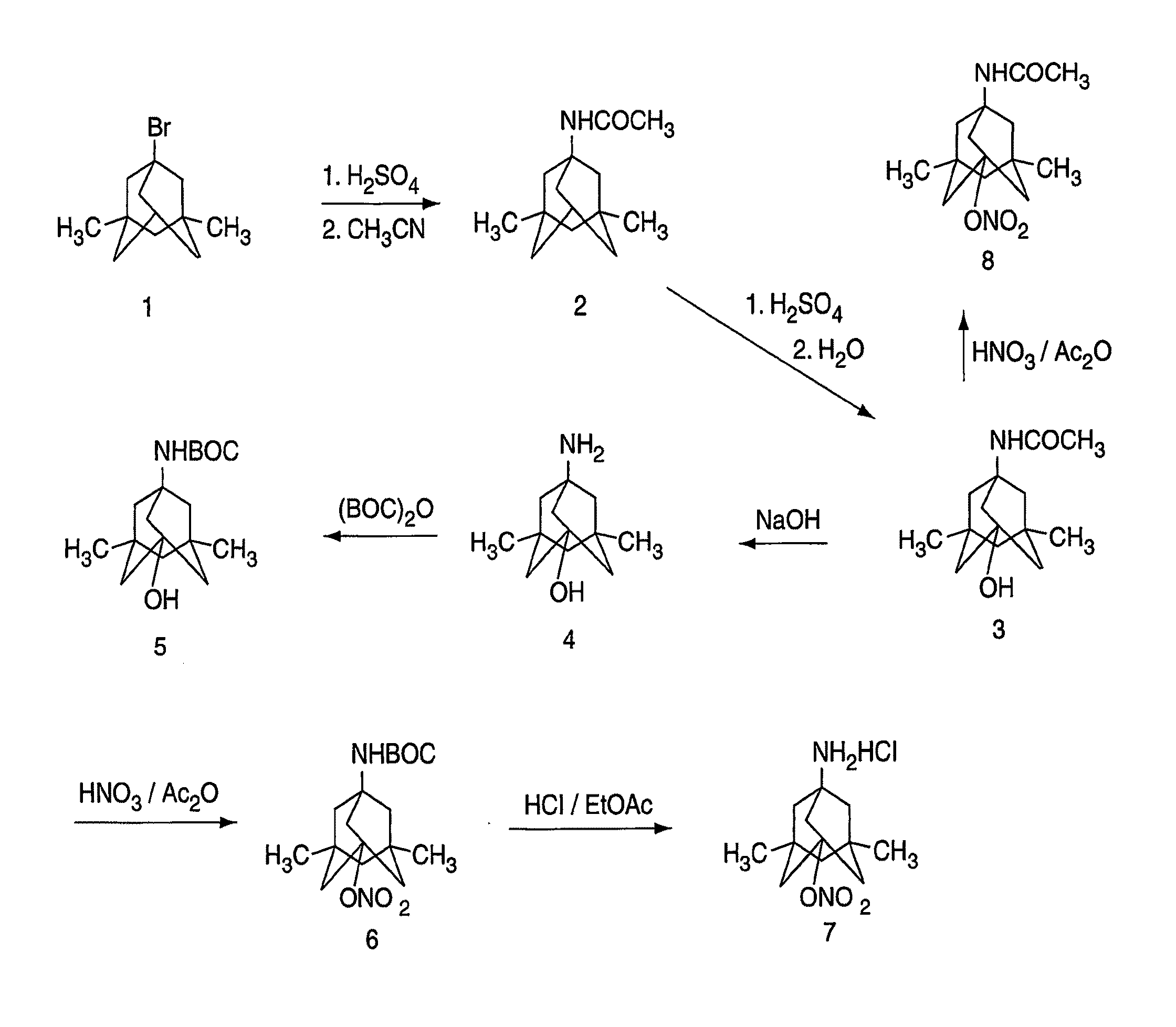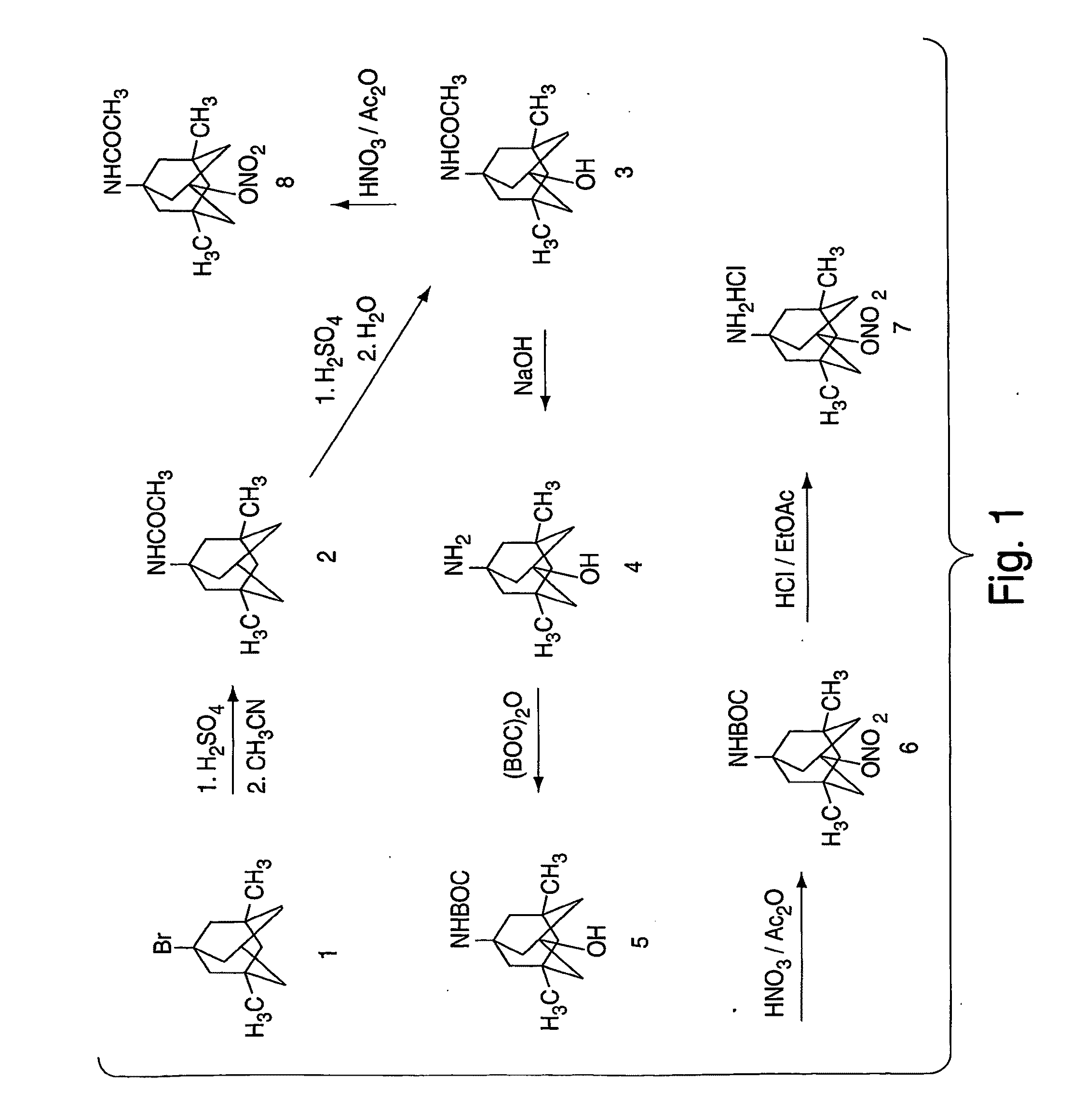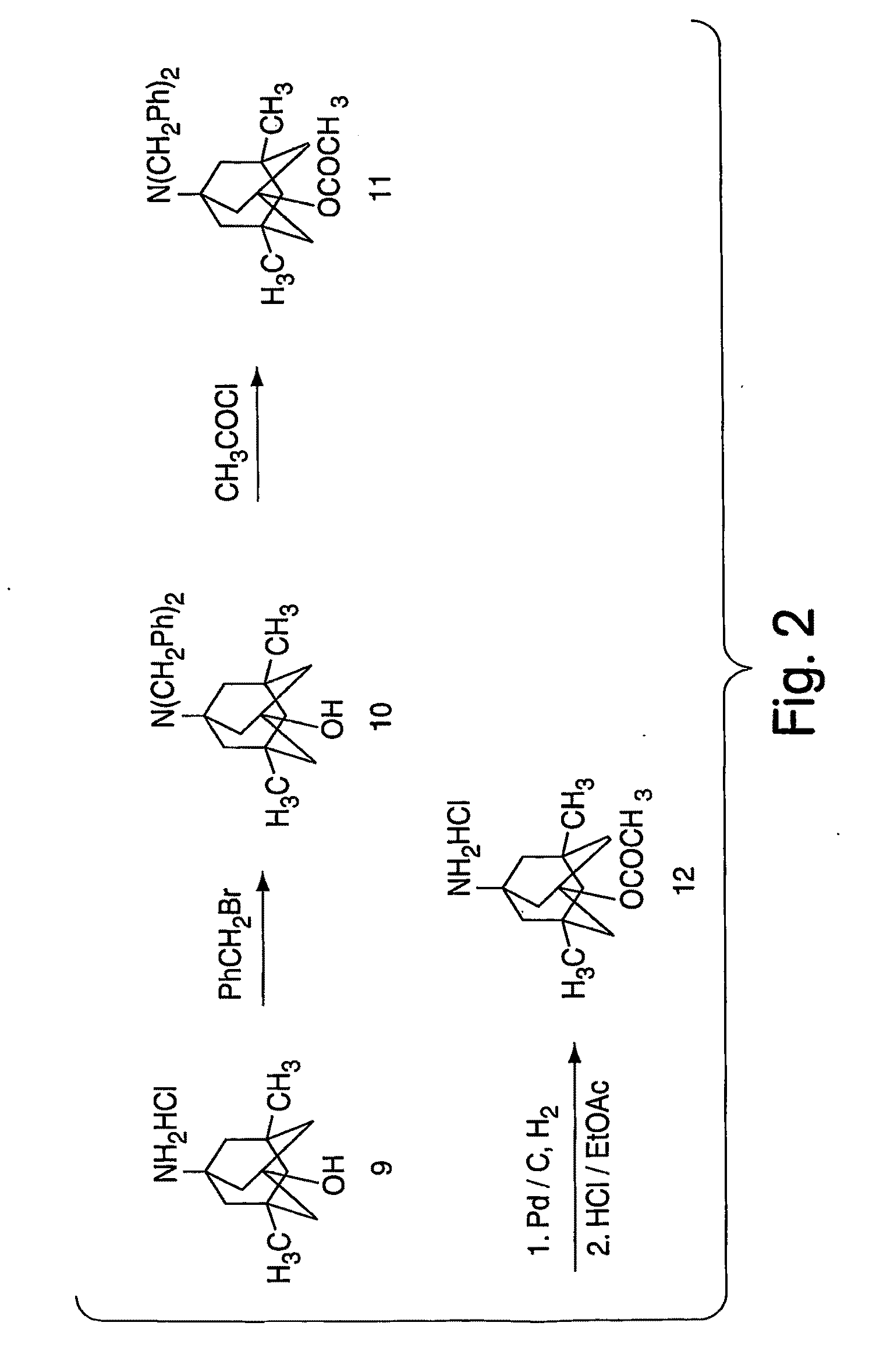Methods for Treating Neuropsychiatric Disorders with NMDA Receptor Antagonists
a neuropsychiatric disorder and nmda receptor technology, applied in the direction of biocide, nervous disorder, drug composition, etc., can solve the problems of affecting the development of drugs targeting the nmda receptor, although desirous, and excessive amounts, and achieves the effect of modulating glutamatergic activation and robust neurotrophic effects
- Summary
- Abstract
- Description
- Claims
- Application Information
AI Technical Summary
Benefits of technology
Problems solved by technology
Method used
Image
Examples
example 1
Synthesis of 1-acetamido-3,5-dimethyl-7-hydroxyadamantane (3)
[0114]Fuming H2SO4 (3 mL) was added to 1-acetamido-3,5-dimethyladamantane (0.2 g) at 0° C. under nitrogen and the reaction mixture was stirred at 0° C. for 1 h. The reaction mixture was poured onto ice (10 g) and the product was extracted with ether (10 mL×4). The combined ether solution was washed with brine (10 mL) and water (10 mL). The solution was dried using sodium sulfate. The solvent was removed in vacuo and, after crystallization on standing, 70 mg of white product was obtained. Pure product was obtained by recrystallization in ether. 1H NMR (DMSO-d6, ppm): 7.30 (brs, 1H, NH), 4.37 (brs, 1H, OH), 1.72 (s, 311, COCH3), 1.65 (s, 2H), 1.47 (s, 4H), 1.24-1.14 (dd, 4H, J=11.2, 23.9 Hz), 0.99 (s, 2H), 0.82 (s, 6H, 2×CH3). m. p. 194-195° C. Anal. (C14H23NO2), C.H.N.
example 2
Synthesis of 1-amino-3,5-dimethyl-7-hydroxyadamantane hydrochloride (4)
[0115]1-Acetamido-3,5-dimethyl-7-hydroxyadamantane (0.4 g) and NaOH (1.1 g) were added to diethylene glycol (7 ml) and the reaction mixture was heated to 175° C. for 15 h. After cooling to room temperature, ice (10 g) was added and the product was extracted with ether (10 mL×4). The combined ether solution was washed with brine (10 mL) and water (10 mL). The solution was dried using sodium sulfate. The solvent was removed in vacuo and, after crystallization on standing, 250 mg of white product was obtained. HCl in ethyl acetate was added to convert the free base to HCl salt. 1HNMR (DMSO-d6, ppm): 8.12 (brs, 2H, NH), 4.72 (brs, 1H, OH), 1.58 (s, 2H), 1.40-1.31 (dd, 4H, J=12.3, 21.6 Hz), 1.23 (s, 4H), 1.08-0.98 (dd, 2H, J=12.6, 23.3 Hz), 0.88 (s, 6H, 2×CH3). m. p. 28 1-282° C. Anal. (C12H22NOCI+0.5 H2O), C.H.N.
example 3
Synthesis of 1-tert-butylcarbamate-3,5-dimethyl-7-hydroxy-adamantane (5)
[0116]1-Amino-3,5-dimethyl-7-hydroxyadamantane (100 mg) was dissolved in tetrahydrofuran (2 mL). Triethylamine (180 ml), di-tert-butyl dicarbonate (336 mg) and dimethylaminopyridine (2 mg) were added sequentially. The reaction mixture was stirred at room temperature for 3 h and then 0.5 N NaOH (2 mL) was added. The reaction mixture was stirred overnight. Triethylamine was removed in vacuo and ether was added. The ether solution was washed with 0.1 N HCl and brine. The solution was dried using sodium sulfate. Solvent was removed in vacuo and 60 mg of product was obtained after crystallization on standing in ether. 1HNMR (DMSO-d6, ppm): 6.35 (brs, 1H, NH), 4.35 (brs, 1H, OH), 1.59 (s, 2H), 1.40 (s, 4H), 1.35 (s, 9H, 3×CH3), 1.22-1.13 (dd, 4H, J=11.1, 20.6 Hz), 0.99 (s, 2H), 0.82 (s, 6H, 2×CH3).
PUM
| Property | Measurement | Unit |
|---|---|---|
| modulation time | aaaaa | aaaaa |
| modulation time | aaaaa | aaaaa |
| modulation time | aaaaa | aaaaa |
Abstract
Description
Claims
Application Information
 Login to View More
Login to View More - R&D
- Intellectual Property
- Life Sciences
- Materials
- Tech Scout
- Unparalleled Data Quality
- Higher Quality Content
- 60% Fewer Hallucinations
Browse by: Latest US Patents, China's latest patents, Technical Efficacy Thesaurus, Application Domain, Technology Topic, Popular Technical Reports.
© 2025 PatSnap. All rights reserved.Legal|Privacy policy|Modern Slavery Act Transparency Statement|Sitemap|About US| Contact US: help@patsnap.com



